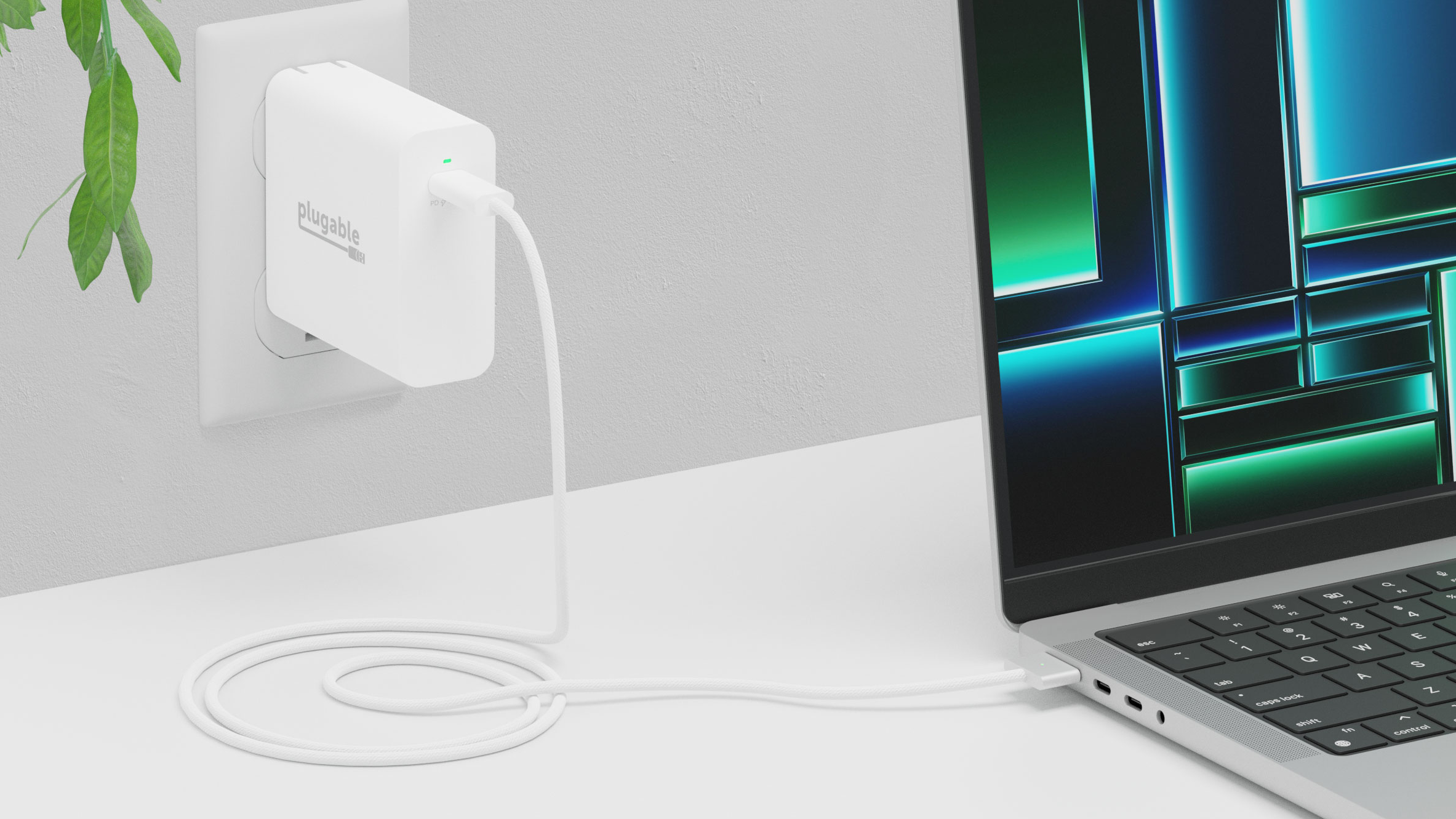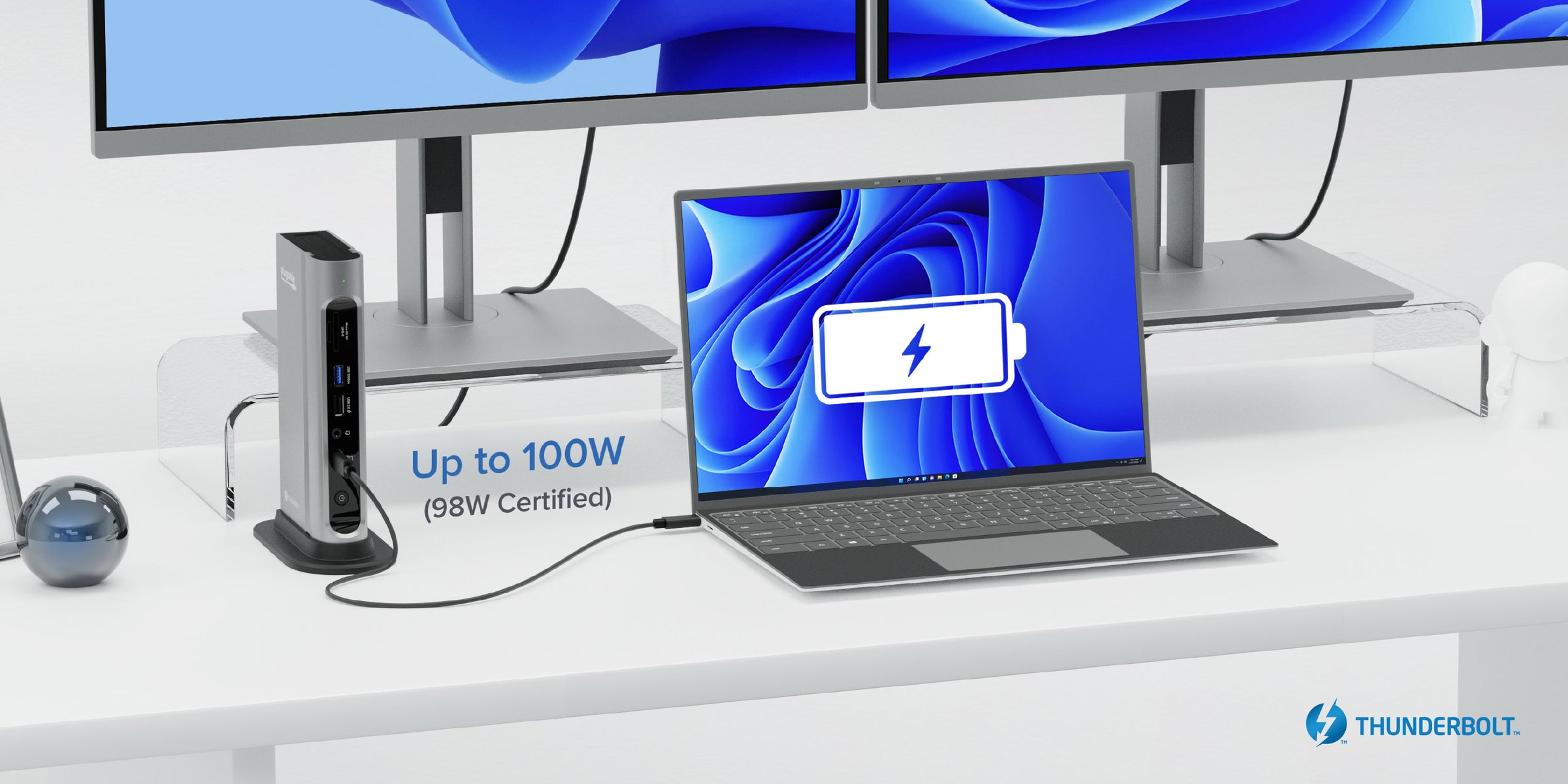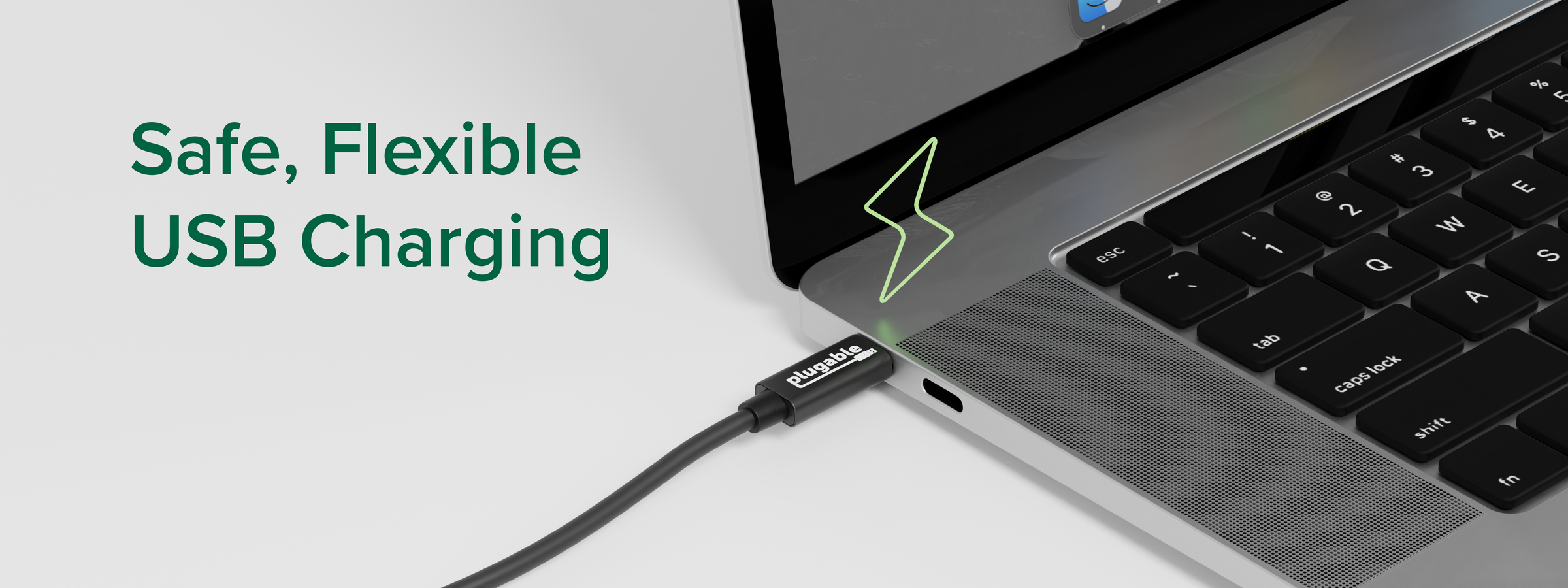Need to Know: What is USB Power Delivery
Plugable Marketing | June 24, 2024

USB Power Delivery (USB PD) is a powerful and flexible technology designed to deliver higher power levels and standardize the charging process across different devices and manufacturers. It allows for dynamic power negotiation and optimized power management between the power source and the device, ensuring safe and efficient charging.
Key Benefits of USB Power Delivery
Increased Power Delivery: USB PD can deliver up to 100W (20V, 5A) of power, significantly more than the standard USB specifications. This enables it to charge larger devices like laptops, monitors, and even some desktop peripherals. With the introduction of USB PD 3.1, the power delivery capability has been increased to an impressive 240W (48V, 5A), supporting even more demanding devices such as gaming laptops and professional-grade equipment.
Flexible Power Negotiation: USB PD allows for flexible power negotiation between the connected devices. This means the power source and the device can communicate to determine the optimal power level required, ensuring efficient and safe charging. This feature helps prevent overcharging and overheating, thus prolonging the battery life of your devices.
Bi-Directional Power Flow: One of the unique features of USB PD is its ability to enable bi-directional power flow. This means that power can be supplied both ways. For example, a smartphone can be charged by a laptop or supply power to a laptop in specific scenarios.
Universal Compatibility: USB PD is designed to work with a wide range of USB-C devices, making it a universal charging solution. This reduces the need for multiple chargers and cables, simplifying the charging process for consumers.
Examples
- Laptops and Tablets: With USB PD, a single USB-C cable can charge a laptop while simultaneously providing data transfer capabilities. The higher power capabilities of USB PD 3.1 (up to 240W) are particularly beneficial for power-hungry devices such as gaming laptops and high-performance tablets.
- Monitors: Many modern monitors use USB PD to receive power and transmit video signals over a single USB-C cable, reducing cable clutter and simplifying desk setups.
- Smartphones and Accessories: USB PD allows for fast charging of smartphones and other accessories, reducing the time required to charge devices fully.

Advances in USB Power Delivery
The latest USB PD 3.1 specification increases the maximum power delivery to 240W and incorporates advancements to support faster data transfer rates and enhanced protocols like USB4. This integration allows for more versatile use of USB-C cables for power and data, meeting the needs of a wide range of devices and applications.
Compliance and Testing
Ensuring the safety and reliability of USB PD devices is crucial. The USB Implementers Forum (USB-IF) continually updates compliance and testing specifications. These updates ensure that devices using the latest USB PD standards are interoperable and meet strict safety requirements. The latest compliance tests cover the new 240W power delivery, ensuring devices can safely and efficiently use this increased power.

USB Power Delivery is a versatile and powerful charging technology that continues to evolve. The latest updates in USB PD 3.1 offer even greater power delivery capabilities, making it suitable for a broader range of devices. As USB PD develops, it will further simplify and standardize the charging process across different devices, enhancing the user experience and promoting a more sustainable approach to device charging.
For more detailed information, you can visit the USB-IF website and other resources on the latest advancements in USB technology.
View Other Articles in Category
Related Articles


Loading Comments